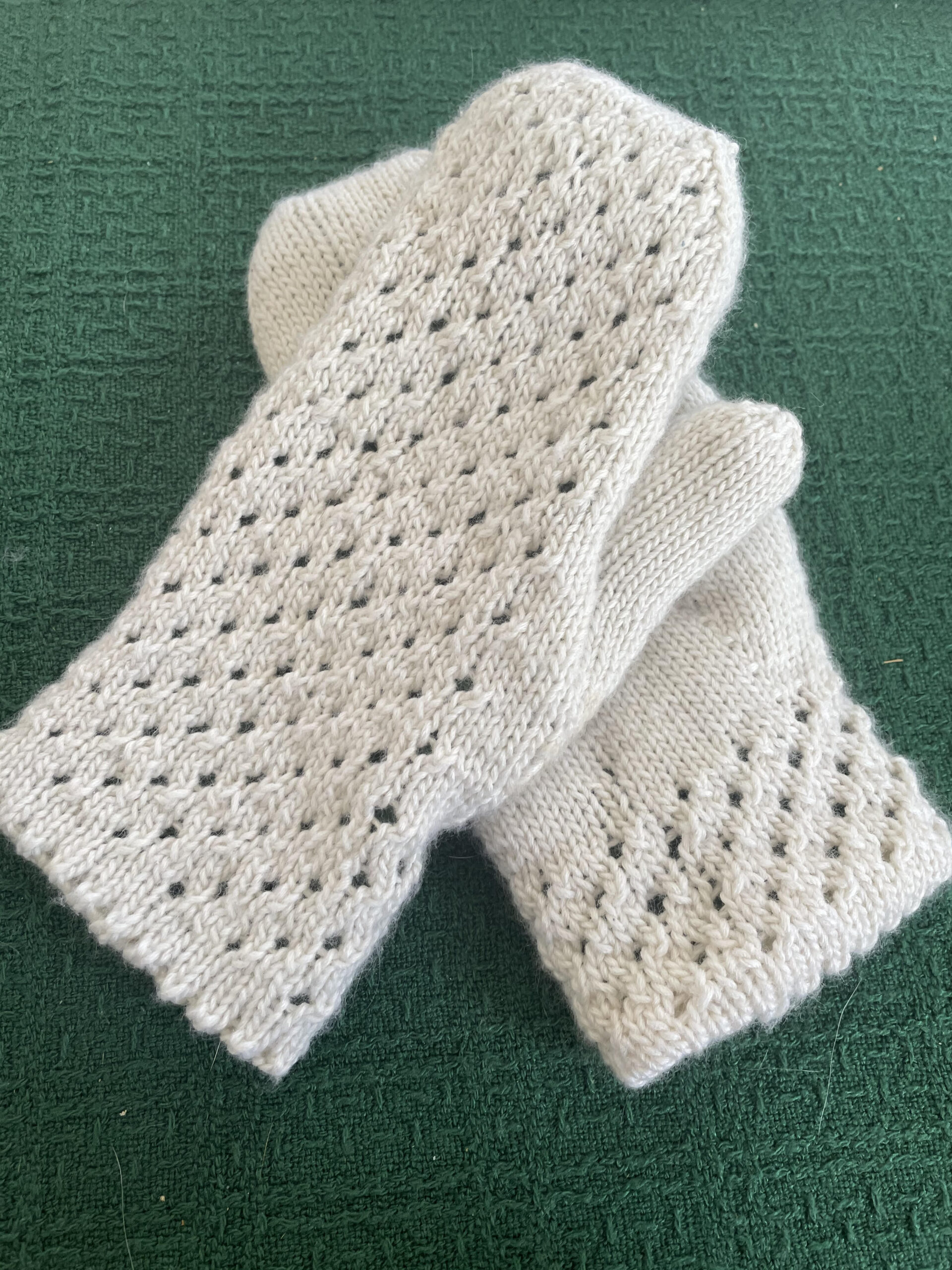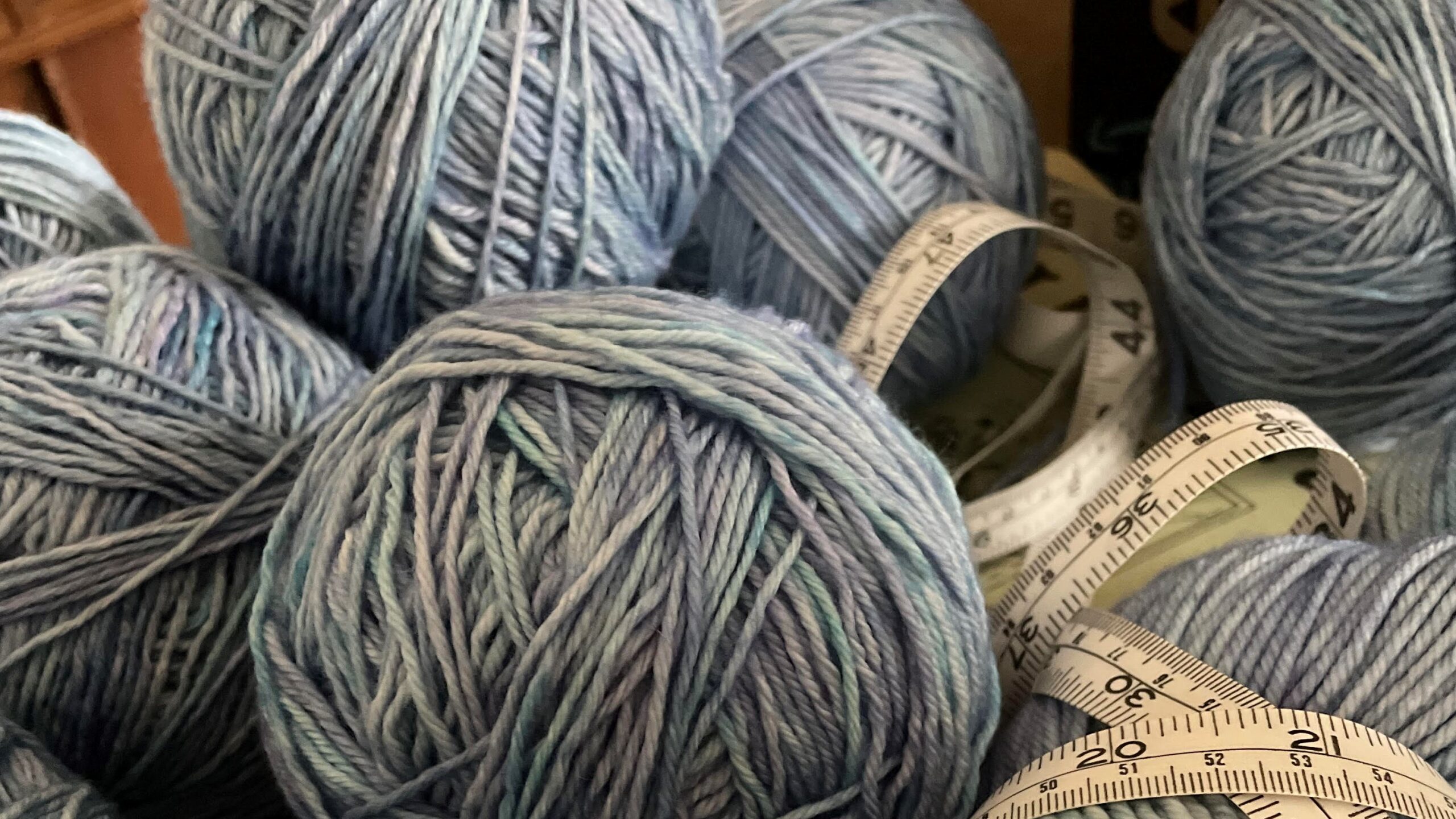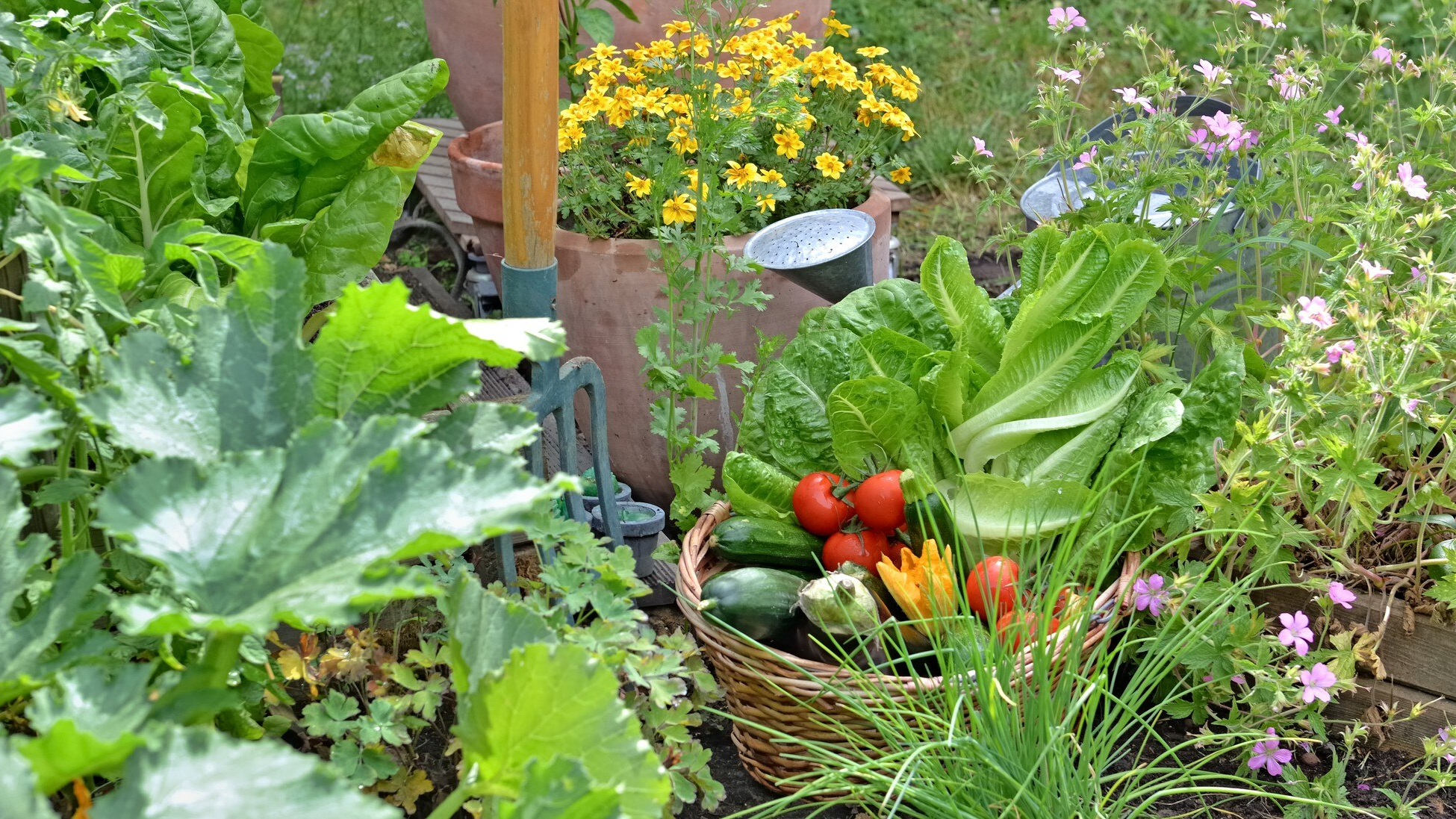My mother was a professor of clothing and textiles at Wayne State University. She earned a bachelor’s degree at that school and then went on to earn a master’s degree at Cornell in the 1950s. She was a passionate teacher and a perfectionist. She would tell her students that they should be able to wear their garments inside out, so cleanly should each seam be finished and each loose thread clipped.
I am not a skilled seamstress, much to her disappointment. My own perfectionism doesn’t extend to the sewing machine and the pain in my neck and shoulder can start if I even think about making some curtains or pillow covers.

Many, many years later I watched a friend work on a sweater for her daughter and I blurted out: “I’ve always wanted to learn how to knit!” And, undaunted by my left-handedness, she taught me.
In this season of post-Easter, not-yet-spring, retirement countdown, I’m struggling a bit with sensing clarity. I know I am ready to retire, some days more than others! But as the days quickly turn one to the next, the month of June feels foggy and unshaped. Clarity of thought, clarity of purpose, clarity of vision, elusive all.
I pick up my knitting. And lose myself in the repetition. Counting. Slipping the markers that guide my pattern. More counting. Quiet concentration. A straight pathway from one end of the row to the other.
As I move toward a life transition, I have begun to reread a favorite book from Barbara Brown Taylor. Learning to Walk in the Dark is her work that validates this sense of not knowing what’s ahead. In the introduction Taylor reminds us that even as children, the darkness may be a place (or a metaphorical place) of obscured clarity. Without assigning malevolence to the darkness, she urges her readers to begin to walk in the dark. And, further, she reminds us that walking in the dark is not a new skill, but something to remember.
Learning to walk in the dark is an especially valuable skill. . .or maybe I should say remembering how to walk in the dark, since people of faith have deep pockets of wisdom about how to live through long nights in the wilderness. We just forgot, most of us. . .The remembering takes time. . .
This cannot be rushed. . .
One stitch at a time, I learned how to knit. Sometimes I marvel at how quickly I learned; other times I struggle with simple skills that folks with more experience take for granted. But, once I learned, heeding my teacher’s advice to “just keep knitting,” I realized that it was almost as if I already knew how to knit, I just needed to put the needles and yarn into my own hands. I needed to remember the rhythm of my childhood life and recover a sense of that deeply planted wisdom of stitches and counting and warmth. Imagine my surprise when I realized I am a really fine knitter, and I don’t get a pain in my neck when I sit down to work!
One day after the next, June is drawing closer. I don’t know today what that month will hold, but I have a lifetime of wisdom, a deep well of remembering to draw from and the clarity of purpose and vision for the next season of my life will come. Maybe when I least expect it. Maybe when I am remembering. Maybe when I am knitting.
Questions For Reflection (either individually or with a group)
Read the blog. Read it a second time, maybe reading it aloud or asking someone else to read it aloud so you can hear it with different intonation and emphases. Then spend some time with the questions with anything that helps you reflect more deeply.
- What do you “remember” about walking in the dark, about taking steps when you find it difficult to find clarity of thought, of purpose, of vision?
- When you’re looking for clarity, at which of the following places would you prefer to be? Why?
- A quiet, personal retreat.
- A favorite place in nature, where?
- In a church sanctuary.
- Talking with a trusted spiritual counselor.
- What wisdom from your childhood do you want to better remember when you are in a state of uncertainty?
Download a pdf including the Reflection Questions to share and discuss with friends, family, or members of your faith community small group.
View all articles by:






















